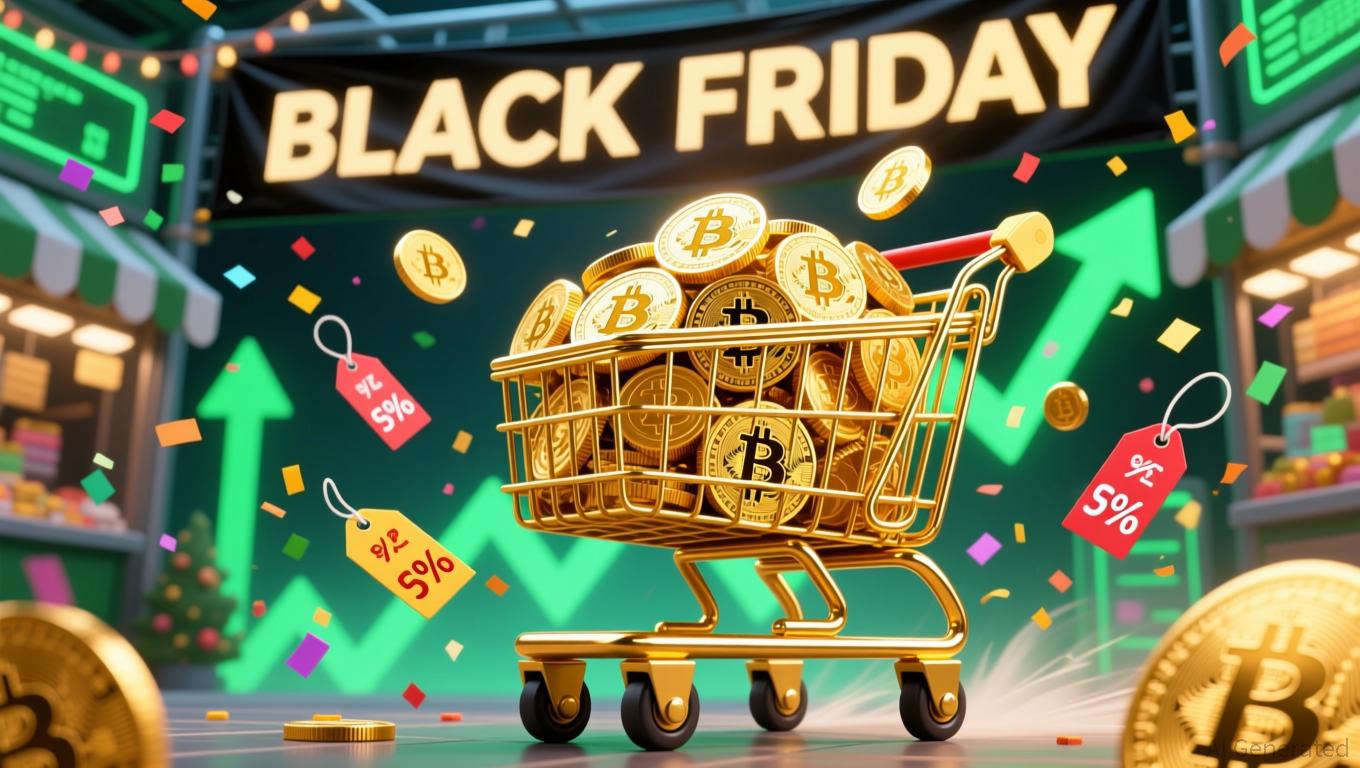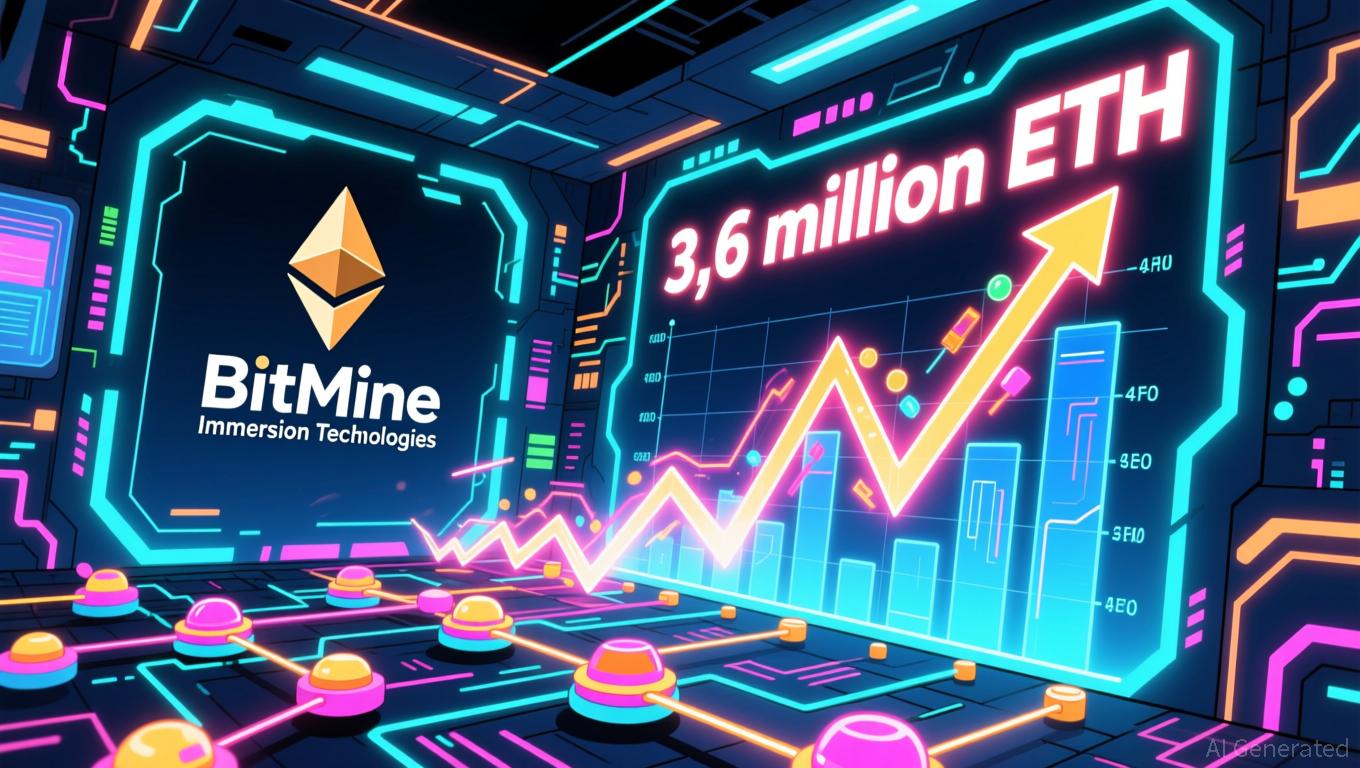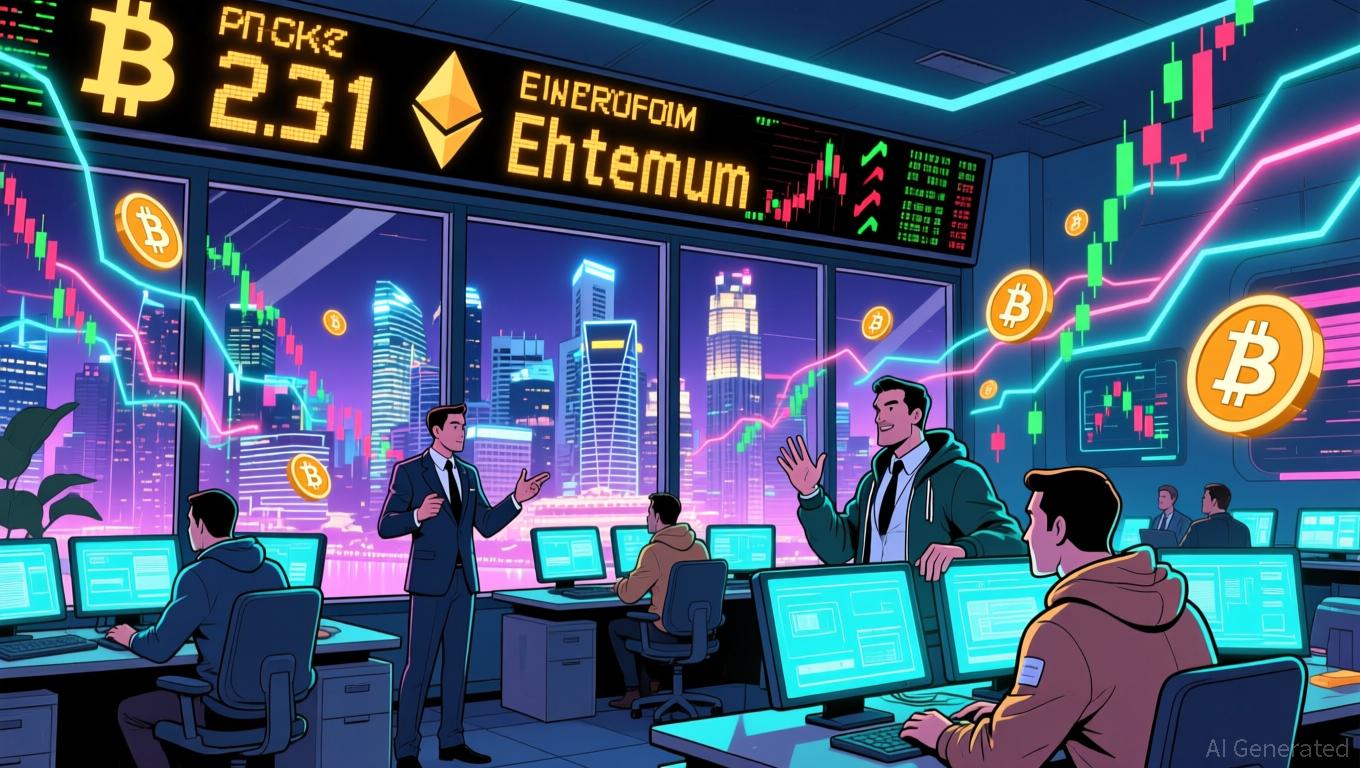Bitcoin News Update: With Interest Rates Falling, Bitcoin’s Black Friday Approach Sparks Discussion Over Ownership
- Michael Saylor's "Black Friday" Bitcoin buying strategy gains traction as market conditions align with discounted asset acquisition opportunities. - Fed rate cut expectations (80% in December) and institutional staking activity highlight strategic entry points amid Bitcoin's $87,000 stabilization. - Saylor's fixed-supply model resonates with long-term investors seeking inflation-resistant value, contrasting traditional fiat systems. - Global crypto shifts include Bhutan's Ethereum integration, Southeast
Michael Saylor’s “Black Friday” Approach to Bitcoin Investment
Michael Saylor’s so-called “Black Friday” method for acquiring Bitcoin is gaining renewed attention as current market trends echo the retail tradition of seeking out bargains. Much like shoppers hunting for deals during holiday sales, Saylor encourages purchasing Bitcoin when it appears undervalued. Recent shifts in the cryptocurrency landscape—including changing expectations for Federal Reserve policy and increased institutional staking—highlight new opportunities for strategic entry into digital assets, as noted in recent analyses.
Bitcoin’s Price Stability and Scarcity Appeal
After a period of price swings, Bitcoin has settled around $87,000, with experts observing that it has found support amid changing global economic conditions. The CME FedWatch tool now suggests there is an 80% chance of a rate cut by December, a development that has shifted investor outlook. Saylor’s advocacy for a fixed-supply model, mirrored by projects like Bitcoin Munari with its 21 million token cap, continues to attract long-term investors who value scarcity. This philosophy stands in contrast to traditional fiat currencies, positioning Bitcoin as a safeguard against inflation and uncertain monetary policy, according to market experts.
Wider Changes in the Crypto Landscape
The digital asset sector is experiencing significant transformation. For example, Ethereum has been integrated into Bhutan’s national digital ID system, and the country has staked nearly $1 million in ETH through Figment, reflecting a rise in institutional involvement. In Southeast Asia, regulatory collaboration with the OECD signals a shift toward sustainable investment practices, potentially shaping Bitcoin adoption in developing economies. Meanwhile, Bitcoin mining in China is making a comeback despite the 2021 ban, fueled by inexpensive energy in areas like Xinjiang—a trend that could further decentralize the network’s computing power, according to market observers.

Retail Investors and the Black Friday Metaphor
Individual investors are also leveraging seasonal opportunities. While Black Friday typically centers on discounts for products such as CINCOM massage devices or Dreame pet air purifiers, the concept now extends to cryptocurrency. Promotional offers, like Hulu’s discounted HBO Max bundle, illustrate how special pricing can drive consumer interest—a strategy Saylor applies to Bitcoin accumulation. The recent approval of Bitcoin spot ETFs in the United States has made it easier for mainstream investors to gain exposure to Bitcoin without the complexities of direct ownership. However, some critics argue that ETFs undermine the core principle of direct asset ownership in crypto, echoing debates about the effects of Black Friday on consumer behavior.
Future Outlook: Strategic Buying Amid Shifting Trends
Looking forward, Saylor’s investment philosophy is shaped by the intersection of global economic changes and technological progress. As Bitcoin nears its 2024 halving—a milestone often linked to price rallies—the balance between institutional interest and retail participation could heighten market volatility. Ultimately, the “Black Friday” analogy underscores the importance of disciplined, strategic purchasing—whether of discounted products or undervalued digital assets—as a key to building long-term value.
Disclaimer: The content of this article solely reflects the author's opinion and does not represent the platform in any capacity. This article is not intended to serve as a reference for making investment decisions.
You may also like
Ethereum Updates: Tom Lee Wagers on $9K ETH, Challenging $4B in Losses with a '2017 Bitcoin' Strategy
- Tom Lee predicts Ethereum (ETH) could hit $7,500–$9,000 by 2026, supported by Fundstrat's $83M ETH purchase and BitMine's 3.6M ETH accumulation (3% of supply). - Despite ETH trading below $3,000 (vs. $3,120 average cost), Lee views the dip as a buying opportunity, citing Ethereum's "Wall Street blockchain" utility and tokenization trends. - BitMine plans to stake its 3.6M ETH via MAVAN for 4–5% yields, aligning with Ethereum's DeFi growth and Grayscale's first U.S. spot Dogecoin ETF signaling crypto's in

XRP News Today: ADGM's Green Light Boosts RLUSD as a Link Between the U.S. and Middle East
- Ripple's RLUSD stablecoin gains ADGM approval as UAE's first regulated fiat-referenced token, enabling institutional use in payments and collateral management. - With $1.2B market cap and 80% supply on Ethereum , RLUSD's adoption accelerates through transparent reserves and NYDFS compliance, bridging U.S.-Middle East markets. - ADGM's stringent framework attracts major institutions, positioning RLUSD as infrastructure-grade asset with 1:1 USD backing and third-party attestations. - Ripple expands regiona

Bitcoin News Update: Exchanges Compete With Crypto Perpetuals to Regain Importance Among Institutions
- Stock exchanges like SGX and Qatar bourses face pressure to adopt crypto perpetual futures (perps) to retain institutional relevance amid $187B+ global daily trading volumes. - SGX's Nov. 24 Bitcoin/Ethereum perps launch reflects traditional finance's integration with crypto, as $57.7B+ daily Bitcoin perp volumes outpace traditional offerings. - Gulf markets show mixed adaptation: Qatar's Ooredoo QPSC secondary offering contrasts with UAE's $5B+ in 2024 secondary sales, while China's property crisis expo

Ethereum Updates: ZKP Initiatives Rise While Ethereum's $3K Level and Dogecoin ETF Decisions Remain Uncertain
- Ethereum hovers near $3,000 as traders weigh technical levels and the Fusaka upgrade's potential impact on scalability. - Grayscale's Dogecoin ETF (GDOG) underperformed expectations with $1.41M first-day volume, reflecting cautious investor sentiment toward meme coins. - Zero Knowledge Proof (ZKP) projects see surging presale activity as investors seek privacy-focused alternatives amid crypto market uncertainty. - Ethereum's 37% drawdown from highs and DOGE's $0.1540 resistance highlight fragile momentum
